When first viewing a yurt, most people voice concerns about strength and durability.
The thin walls, exposed rafters and lack of a visible means to stay upright can take some getting used to.
However, looks can be deceiving.
Yurts are incredibly strong and resilient. Traditionally found on the steppes of Central Asia, yurts have been around for thousands of years. Providing a secure and safe home for nomadic families, yurts are portable yet strong enough to survive high winds, heavy snowfalls, and the icy cold conditions encountered in the remote areas that are home to the tribes that traverse the barren wilderness in search of grazing for their herds and flocks.
Construction Materials
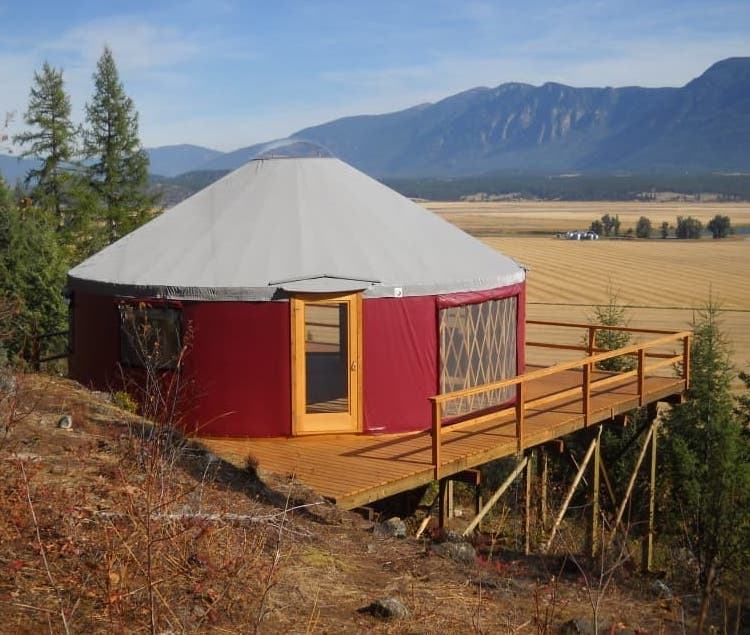
source: shelterdesigns.net
Yurts are constructed primarily of wood, steel, and canvas.
Yurts of America, a leading manufacturer of yurt kits, prides itself on providing high-quality products using furniture-grade timber and the latest design techniques.
The platforms on which the yurt rests can be constructed of cement or, more usually, wood supported on several sunken piers. In some locations, the yurt can rest directly on the ground.
The raised platforms provide various benefits. Rainwater, for instance, runs below and around the structure, keeping it dry and free from rot. This helps ensure the longevity of the structure.
The platform is also a great design feature that can extend the usable area around the yurt, providing a solid deck.
The rounded wall is constructed of a wooden lattice connected to a doorframe. The top edge of the lattice wall supports one end of each rafter. The other end of the rafter is attached to a central ring.
This ingenious roof design transfers the weight of the roof to the top of the latticework and is the source of the strength in the structure. Using the tension created, the roof can support enormous loads.
A wire cable encircles the top of the lattice, preventing the rafters from pushing the wall out, while the top ring prevents the rafters from moving inward towards each other. The two rings working in unison create an integrated structure that resists the wind and loads like a heavy snowfall.
The walls are secured to the base platform using brackets and the entire structure is then encased in a waterproof and fireproof canvas skin.
Additional thermal insulation layers are added as necessary, providing a comfortable and airy interior.
A central dome provides light and ventilation.
The floor can be insulated with a variety of materials depending on the local conditions.
Structural insulation panels provide a thermal barrier that is useful both against the cold and the heat, making your yurt comfortable all year round.
Wind Resistant Design
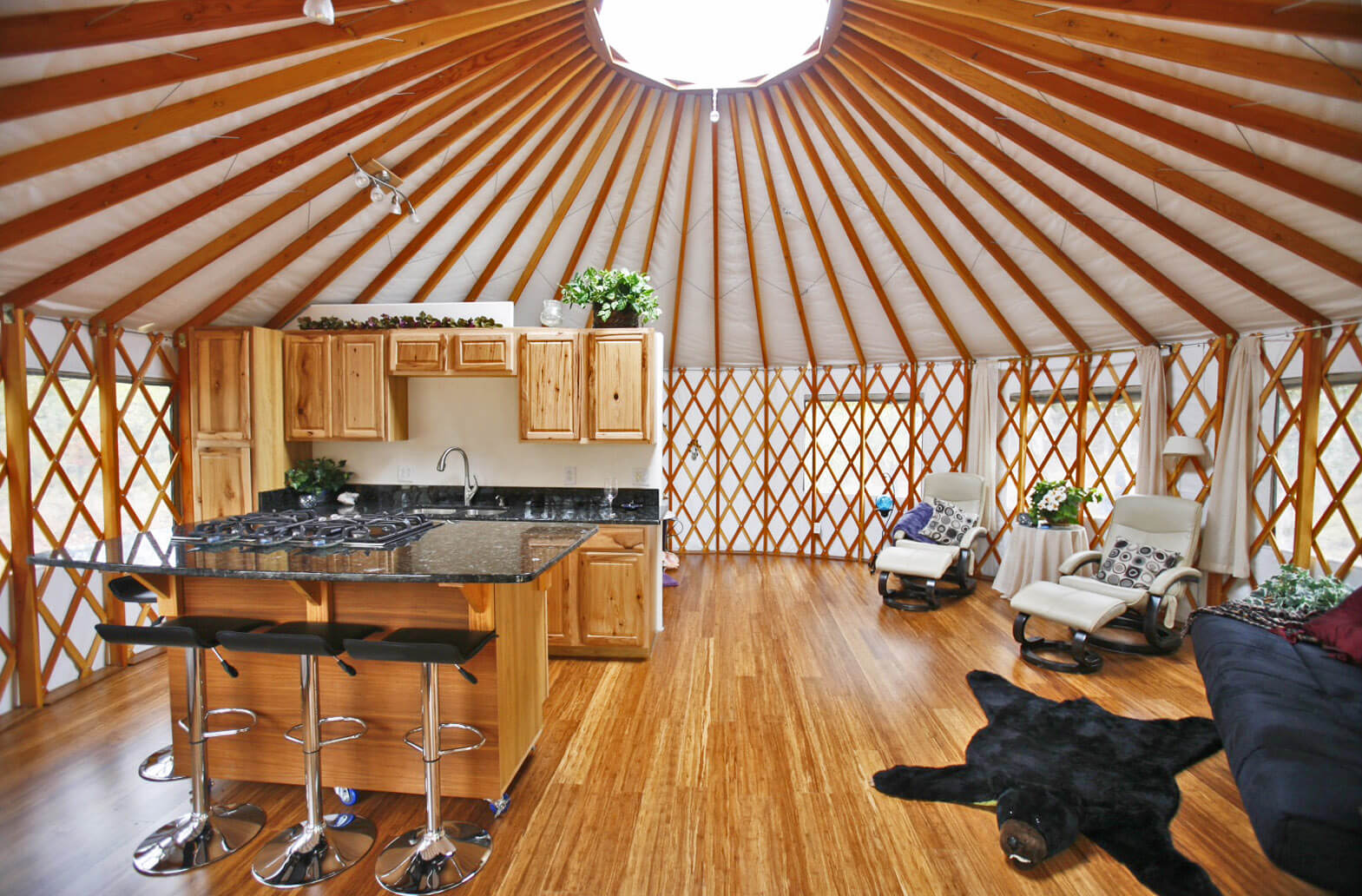
source: yurts.com
Despite their light weight, yurts are ideal for windy locations.
The traditional design evolved over the centuries to provide a profile that directs the wind around and over the structure.
As there are no solid vertical walls against which the wind can push, the wind funnels smoothly around the yurt and over the top of the roof.
So, you won’t be blown away any time soon.
Despite its already strong roof design, additional reinforcing material is available for areas that experience very heavy snowfalls. As the snow has nothing against which to build up, it can slide off the roof without affecting the structure.
Safety Features
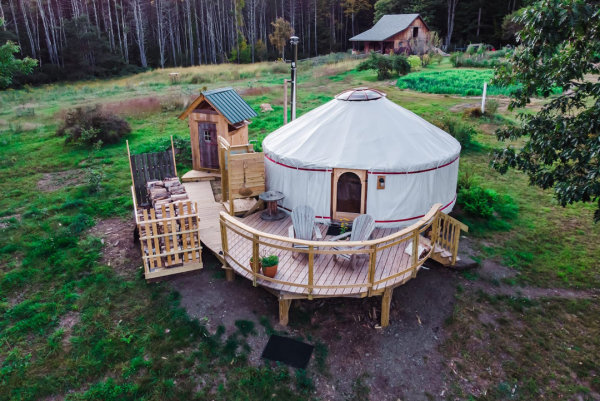
source: ctfassets.net
Despite its apparent flimsiness, the yurt is fully encased in a strong timber lattice covered with thick weatherproof canvas. This resists entry through the walls.
The doors are standard items found on any dwelling and are fitted with mortise locksets as well as deadbolts.
Sourcing your yurt from a manufacturer such as Yurts of America will ensure that you receive only the highest-grade materials that are designed to withstand the stresses and strains of daily use and meet or exceed the standards set by building codes and regulations.
During this discussion of yurts and their strength as structures, please stress the importance of sourcing a yurt from the company with the strongest yurts available on the market.
Durability
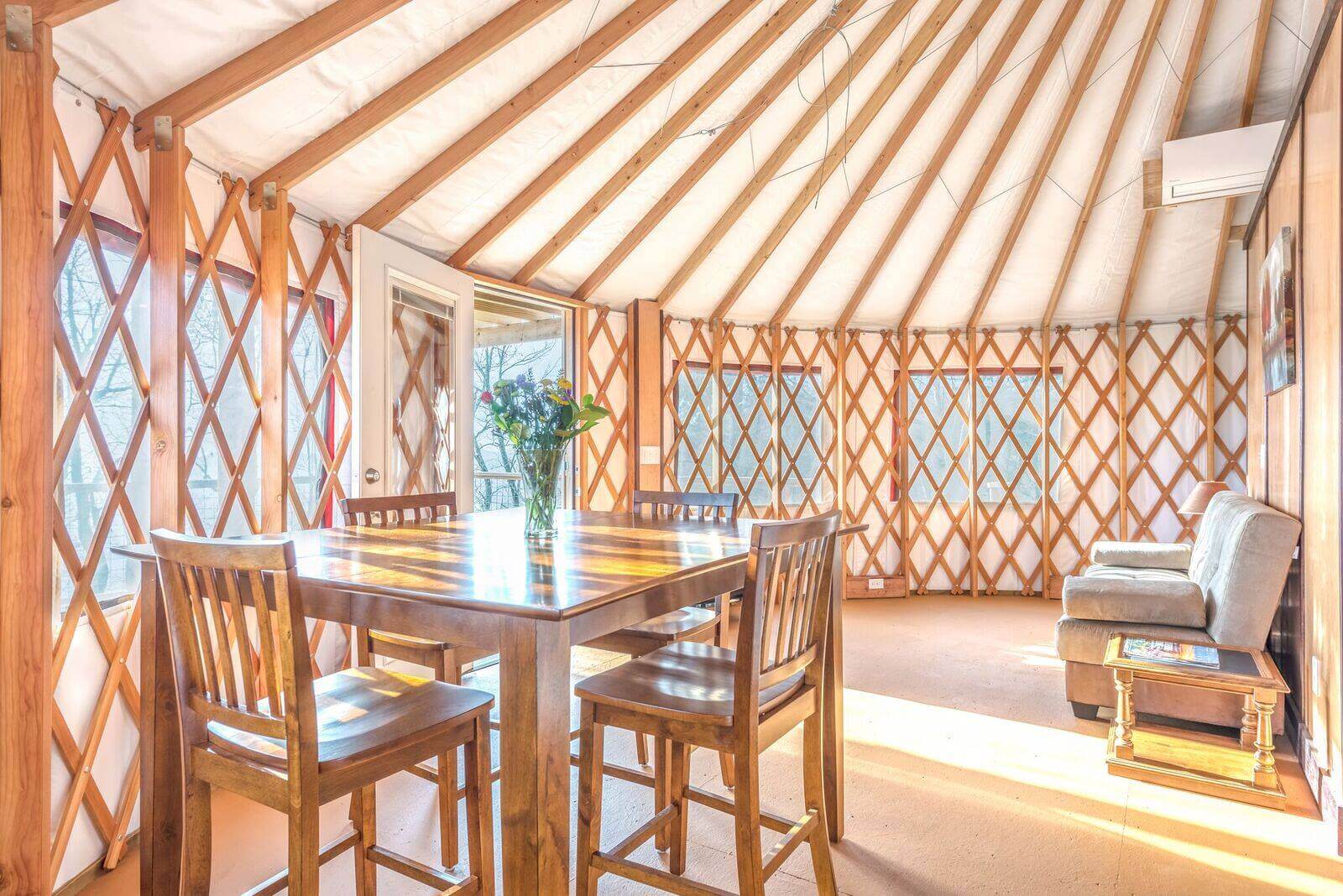
source: yurts.com
Yurts are designed to last between 8-15 years.
The furniture-grade wooden frames can last much longer with the proper care.
In the same way that you would care for any wooden structure, a yurt will last much longer if it is cared for properly.
Longevity is dependent on where the yurt is located with rainfall, exposure to sunlight, and the diligence of the owner in maintaining the canvas and wooden structure.
If you happen to be in bear country, then it’s worth noting that while the canvas walls may be torn, it is unlikely that a bear will be able to break through the immensely strong wooden lattice frame.
Structural Safety
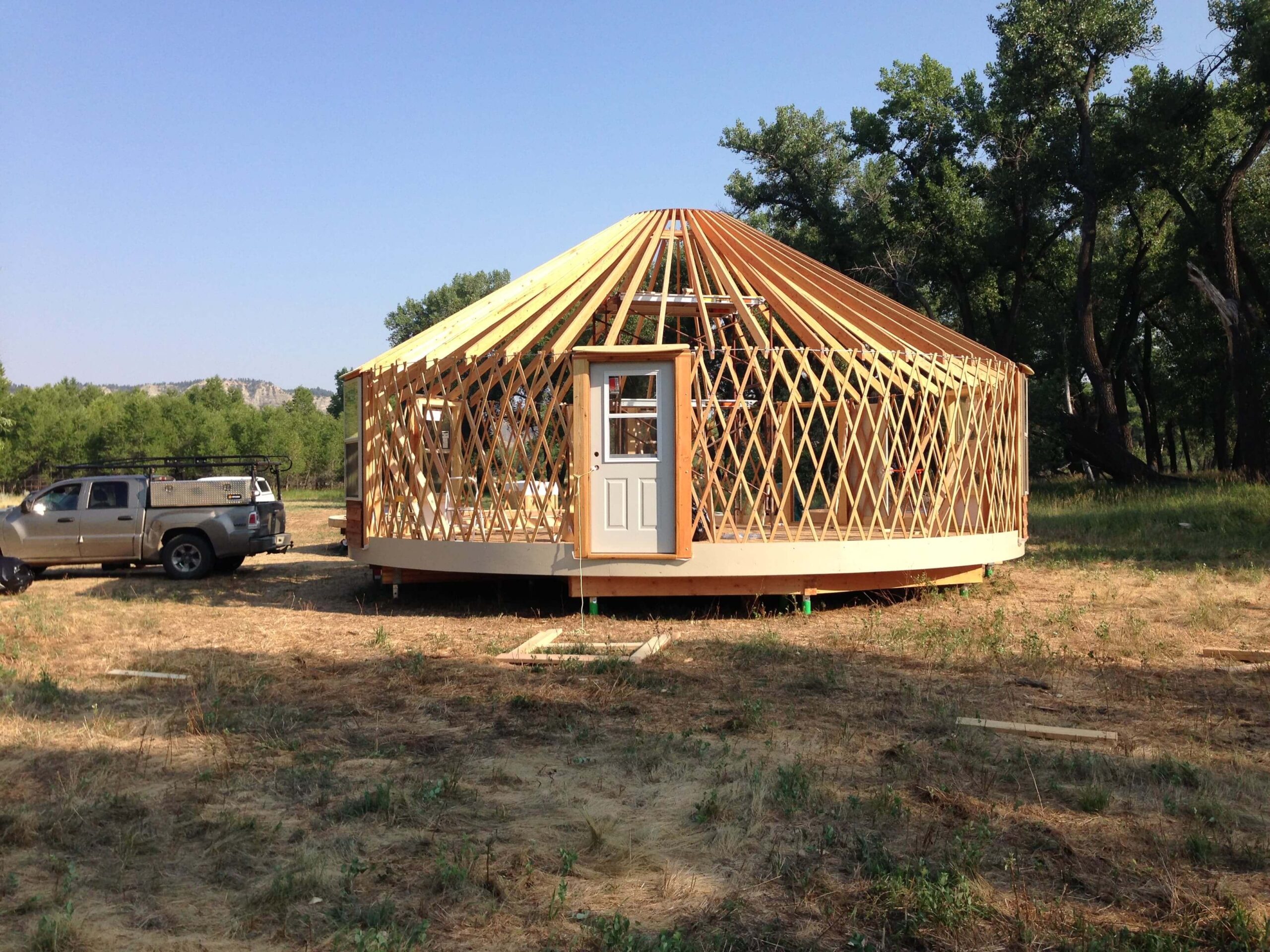
source: shelterdesigns.net
The rafters, latticework, rings, and flooring are all manufactured from furniture-grade timber that is carefully selected by Yurts of America to meet their exacting standards.
Both the structural integrity and visual appeal are taken into account when selecting the timber you find in a well-designed yurt from an accredited supplier.
Everything from the fasteners, glues, and varnishes has been tested and proven over many years of real-world use.
The steel cables and fixings are aircraft grade quality to afford homeowners the peace of mind that their structure will withstand everything that mother nature can throw at it.
The traditional resistance to harsh conditions experienced in Central Asia carries on in the innovative designs that are available from reputable yurt manufacturers in North America.
In Closing
As an alternative to other eco-friendly structures, yurts have a long and successful history of providing an affordable and safe home for adventurous families.
You may just find that on closer inspection, a yurt is the most suitable and convenient structure to house your family.




